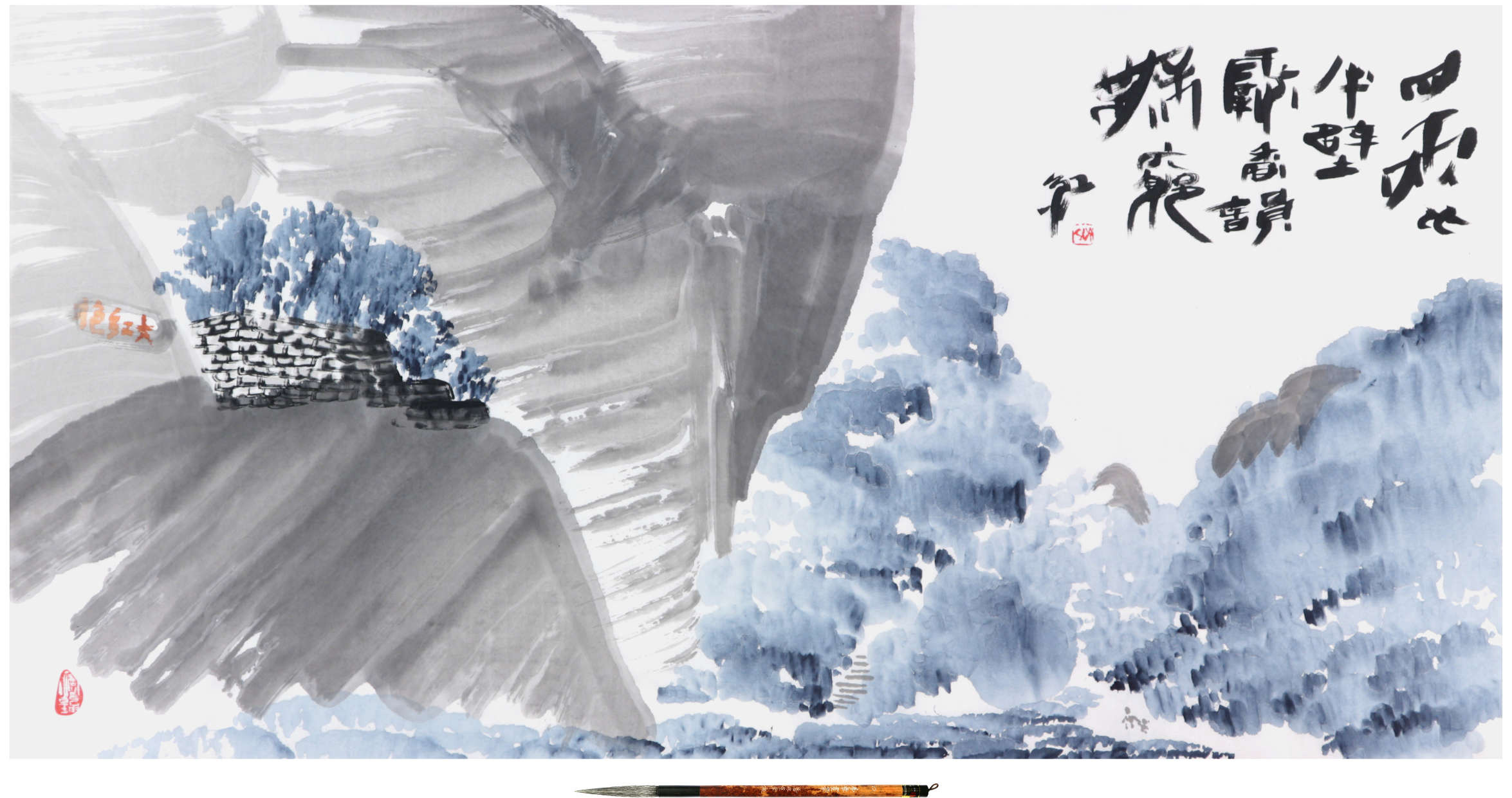 |
|
|
The Example of Sai Koh (Qi Hong)’s Freehand Brushwork
Traditional Chinese Painting and Calligraphy on Tea:
Chinese painting (landscape painting, literati painting, ink
wash painting), Chinese calligraphy
(semi-seal script calligraphy), Chinese seal engraving (Chinese
seal carving, Chinese seal cutting)
Dahongpao Seed Trees in Mount Wuyi
ink & color on Xuan paper, 2017
Inscriptions: 200 grams of tea occupies half of
the hill wall. They exude a deep fragrance and endless charm.
Koh (Hong); Chinese, 四兩比半壁 霸香韻無窮 紅
Seal: Sai (Qi); Chinese, 齊 A Drop of Water
Moistens the Universe; Chinese, 一滴潤乾坤
Xuan Paper: Mian Liao Mian Lian, 138×69cm
Brush: Goat Hair Long Head Brush, Meng Zhang
Hua Bi · Jiang
|
|
|
|
|
|
View 2 |
The Basic Elements of Traditional Chinese Painting and
Calligraphy Art - Chinese Taste
|
|
|
Back in
the old days when I first wrote my name in a booklet distributed
in class, I was not writing but creeping it with all my
strength. I was praised by my parents for the correct strokes of
the Chinese characters. It seemed to me that the grid was too
small to accommodate my name. Finally I crept it out of the
grid. My dad said that “creeping Chinese characters” seemed
interesting but could not be done by him. Since then, I acquired
the concept of "tasty calligraphy".
The Chinese examination taught me that wrongly written
characters can not produce "taste". Taking notes and doing
homework with the wrist and elbow raised every day made me
gradually understand that "writing" can "record and reproduce
taste".
Traditional Chinese painting and calligraphy can be said to have
the "taste of Chinese characteristics" for the world to savor.
Whether to savor the taste or the story behind the taste is not
limited to nationality, gender, age, status or education but
based on cognition and preference of the unique connotation of
traditional Chinese culture. It is actually a conclusion drawn
from personality pursuit and repeated practice that vary from
person to person. |
|
|
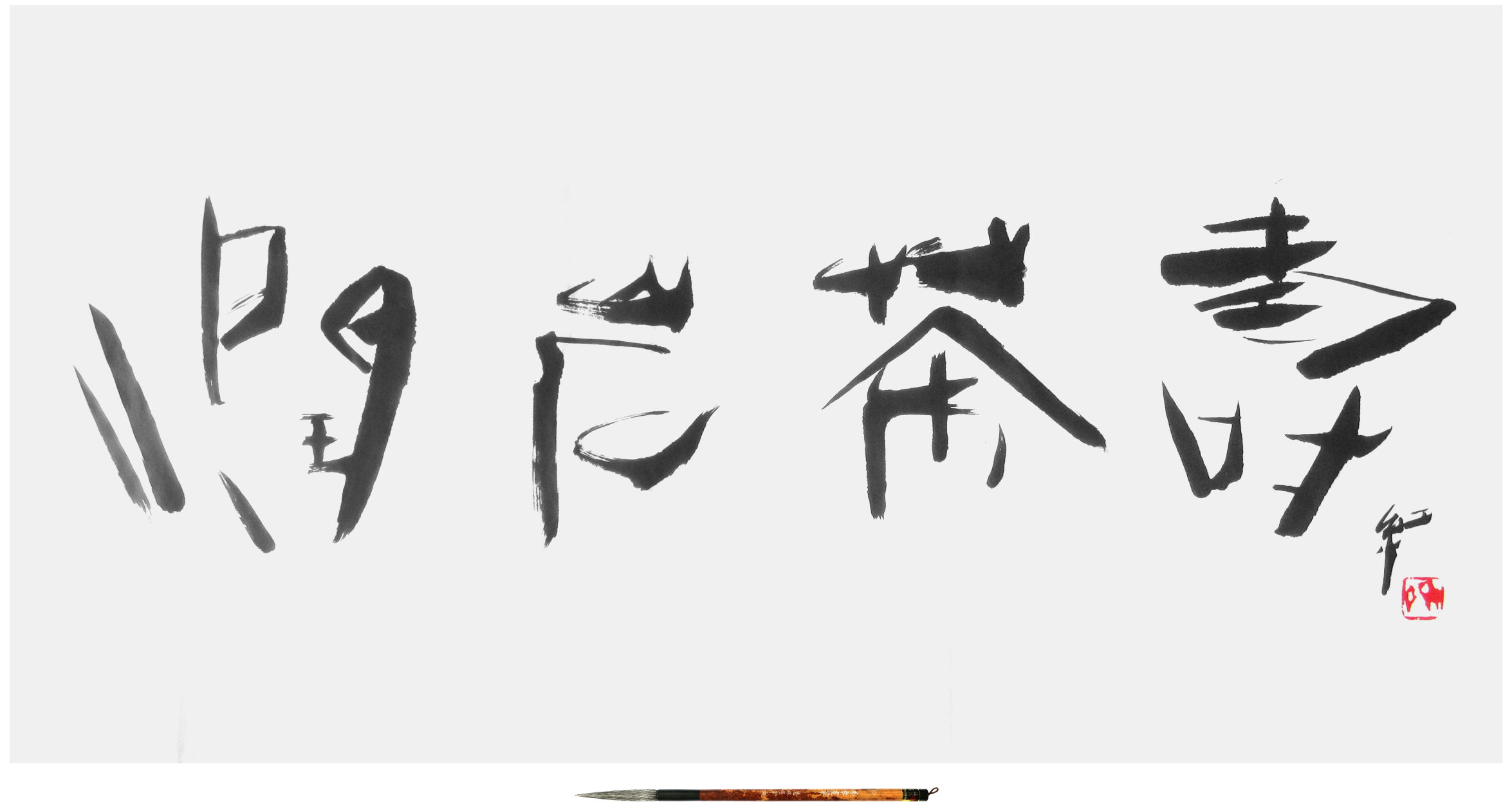 |
|
|
The Example of Sai Koh (Qi Hong)’s Freehand Brushwork
Traditional Chinese Painting and Calligraphy on Tea:
Chinese calligraphy (semi-seal script calligraphy), Chinese seal
engraving (Chinese seal carving, Chinese seal cutting)
Run Yan Cha Shou
ink on Xuan paper, 2014
Pinyin: run yan cha shou; Chinese, 潤岩茶壽 紅
Seal: Sai (Qi); Chinese, 齊
Xuan Paper: Mian Liao Mian Lian, 138×69cm
Brush: Goat Hair Long Head Brush, Meng Zhang
Hua Bi · Jiang
|
|
|
|
|
Unique Literary Graphic Arts - "Taste of Expressiveness in
Freehand Brushwork" contained in the Integration of Poetry,
Calligraphy and Painting
As the saying goes, "Calligraphy is the painting in the heart"
while "Painting is the calligraphy in the heart". In other
words, "Calligraphy and painting are of the same origin" or
"Poetry, Calligraphy and Painting are integrated into a whole".
Based on the literacy of Chinese characters and the lines of
writing, the traditional Chinese painting and calligraphy art
mainly expresses the author's subjective inner emotions. As a
graphic art, it is the "Integration of Poetry, Calligraphy and
Painting" that features expressiveness in freehand brushwork,
consistency of brush strokes, and vividness in form and spirit.
In contrast, other graphic arts (excluding printmaking with
texts, cartoons, advertisements, trademarks and patterns) are
characterized by no text, emphasis on single or multiple points
of sight, focus on light and shade contrast, center on image
skill beauty and highlight on faithful reproduction or
decomposition of overlapping or extremely simplified patterns.
Art can also be a "desirable taste" produced in the heart of the
viewer after comparison of works.
As the saying goes, "Don't fear it won't be appreciated". The
"Chinese taste" of traditional Chinese painting and calligraphy
is not like the copying taste of printed software fonts or
photographs nor like the time-consuming craft taste of hand-made
brocade embroidery. As you see, how to choose "comparative
focus" is the key to determine the degree of satisfaction.
Another example is "being a silent victim." Even if the artist’s
subjective emotional experience is turbulent, if he doesn’t want
to express or can’t express clearly, he has to swallow his
discomfort. It can be seen that "Subjective Purpose and
Objective Skill" are the keys to comparing the degree of
satisfaction with the Chinese taste of traditional Chinese
painting and calligraphy.
|
|
|
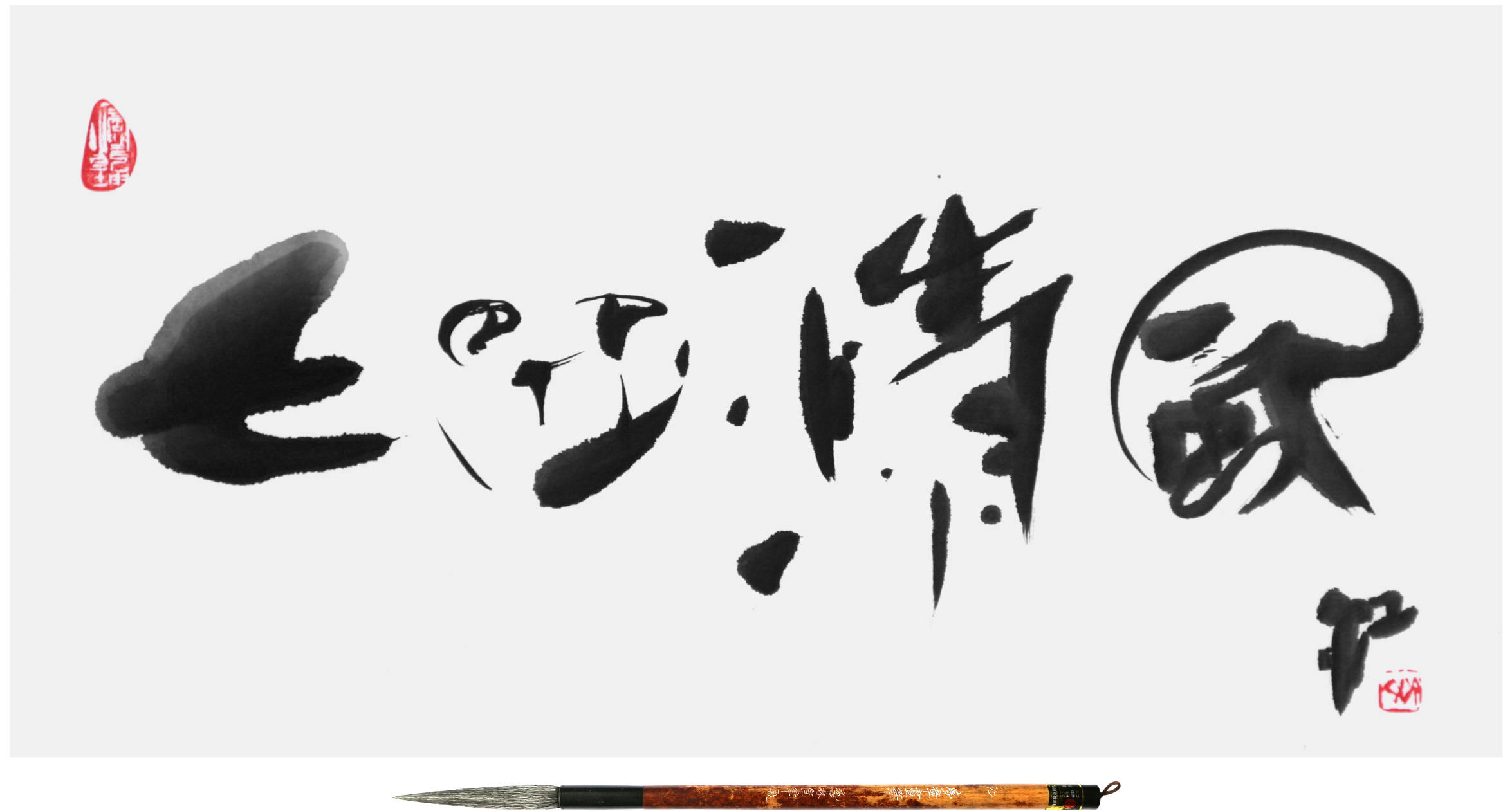 |
|
|
The Example of Sai Koh (Qi Hong)’s Freehand Brushwork
Traditional Chinese Painting and Calligraphy on Tea:
Chinese calligraphy (semi-seal script calligraphy), Chinese seal
engraving (Chinese seal carving, Chinese seal cutting)
One has a Refreshing Breeze Feeling When He Drinks
the Seventh Bowl of Tea
ink on Xuan paper, 2017
Pinyin: qi wan qing feng; Chinese, 七碗清風 紅
(Literary quotation: A Message of Thanks to Meng Jianyi for
the Gift of New Tea made by Lu Tong in the Tang Dynasty)
Seal: Sai (Qi); Chinese, 齊 A Drop of Water
Moistens the Universe; Chinese, 一滴潤乾坤
Xuan Paper: Mian Liao Mian Lian, 69×34cm
Brush: Goat Hair Long Head Brush, Meng Zhang
Hua Bi · Jiang
|
|
|
|
|
The Pin-pointing of the Unique Subjective Purpose -
“People-oriented Personal Taste” Expressed in Poetic Words
In my childhood, I saw a cartoon named “A Famous Painting
Created by Wagging Donkey Tail” and also heard the legend of
“Understanding Friends”. They still linger in my mind today.
The “wagging trail” of the donkey tail can be described as a
picture with visual commonality, and it can also be surely
regarded as a beautiful painting in the eyes of a viewer; the
Guqin sound of Boya can be described as a melody with auditory
commonality or be a beautiful melody in the ears of a listener.
Although such “pure skill beauty” directly affects the sense
organs of the appreciator because of its visual and auditory
commonality, the appreciator is purely satisfied by the artist's
skill but ignores the artist's intent. In other words, the
appreciator is merely satisfied by the artist's skill show-off.
Boya's vivid Guqin-playing skills are to express high mountains
and flowing waters in his mind. As Boya's understanding friend
who was familiar with traditional Chinese culture, Zhong Ziqi
not only appreciated Boya's “pure skill beauty” but also took a
fancy to Boya's vivid expression of “high mountains and flowing
waters” with “pure skill beauty”. Under the effect of the Guqin
sound, Zhong Ziqi's feelings at the scene resonated with Boya's
inner world. No matter what Boya thought in his mind, Zhong Ziqi
could express exactly what Boya thought.
Skills that carry no purpose are “purposeless skills.” On the
contrary, purpose that cannot be vividly conveyed by skills is
“unskillful purpose.” Only when the skills exactly express the
purpose can the expressiveness integrated or transformed by
purpose and skills be achieved. Only in this way can skills have
true significance.
Traditional Chinese painting and calligraphy can be a kind of
"human-oriented" visual language with a clear purpose.
Different from other graphic arts, poems and sentences in
traditional Chinese painting and calligraphy are either created
by authors themselves or quoted from others. Their conception
determines the taste of the work. The "people-oriented taste"
expressed in the conception of Chinese characters has the visual
commonality of languages and the pictographic artistry and clear
purpose of Chinese characters. As an inherent part of the soul
of traditional Chinese painting and calligraphy, the conception
of Chinese characters is the "decisive taste" when the viewer
compares various "people-oriented tastes of China".
Vulgar, boring, ridiculous, weird, ignorant, funny, sluggish,
decadent, vague, guessing, incoherent, drunk, cursing, wrongly
tagged, deliberately misrepresenting, far-fetched and
grandstanding conceptions should not belong to the attitude
category of traditional Chinese painting and calligraphy.
|
|
|
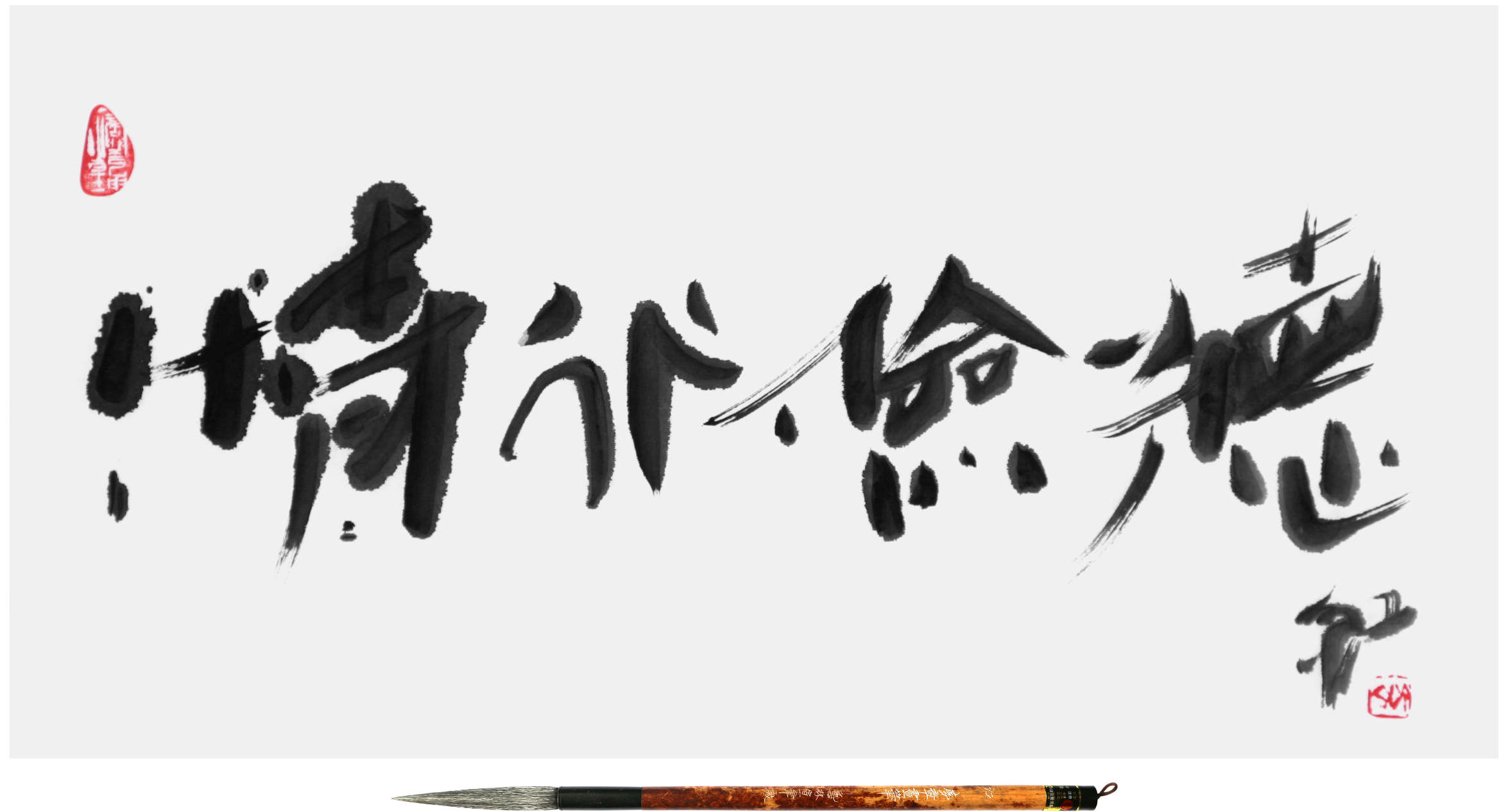 |
|
|
The Example of Sai Koh (Qi Hong)’s Freehand Brushwork
Traditional Chinese Painting and Calligraphy on Tea:
Chinese calligraphy (semi-seal script calligraphy), Chinese seal
engraving (Chinese seal carving, Chinese seal cutting)
Tea is Beneficial to A Person of Good Conduct and the
Virtues of Diligence and Thrift
ink on Xuan paper, 2017
Pinyin: jing xing jian de; Chinese, 精行儉德 紅
(Literary quotation: Tea Classic made by Lu Yu in the
Tang Dynasty)
Seal: Sai (Qi); Chinese, 齊 A Drop of Water
Moistens the Universe; Chinese, 一滴潤乾坤
Xuan Paper: Mian Liao Mian Lian, 69×34cm
Brush: Goat Hair Long Head Brush, Meng Zhang
Hua Bi · Jiang
|
|
|
|
|
Unique Black-and-White Contrast Technique - "Individualized
Tastes of Integration or Transformation of Yin and Yang" that
Pursues Scrupulosity and Succinctness in Painting and Leaves
Blank Space
Compared with other graphic arts featuring "rich color
contrast", traditional Chinese painting and calligraphy focus on
"leaving blank space and employing black-and-white contrast".
"Rich color contrast" can mean "being realistic, colorful and
rich in content" or "copy, vulgarity and depression" while
"black-and-white contrast with blank space" can mean "being
unrealistic, monotonous and simple in content" or "feeling,
elegance and breathability".
Traditional Chinese painting and calligraphy can be a
people-oriented "image with blank space", which removes the
interference of impurities through the appearance of objects,
captures and expresses the essential feelings towards the
objects, and exhibits the integration or transformation of yin
and yang. At the same time, black ink and white paper
originating in China are the main seasonings with Chinese
characteristics. If the black-and-white contrast technique as
the "main seasoning" is not applied in the painting, such a work
should contain no "Chinese taste".
As far as the work plane is concerned, since the available space
of the rectangular plane is larger than that of the square
plane, the rectangular plane is easier to leave blank space.
Square paper has been rarely used in traditional painting and
calligraphy works, especially calligraphy works. Its presence is
mainly related to the structure of the halls of ancient Chinese
houses. Square works can be used as the plane limit to compare
the "Tastes of Integration or Transformation of Yin and Yang".
Meanwhile, graphic works are visual objects in ordinary people's
naked eyes. When the entire work is displayed within about
one-sixth of the central field of vision, you can "look fixedly
and scrutinize the overall vivid effect or move your eyes to
appreciate local brush-wielding skills". Whether the work has
the whole and local clarity in the field of vision is also an
important standard used to compare the "Tastes of Integration or
Transformation of Yin and Yang".
The blank plane centered on the black-and-white contrast can be
the result of mutual coordination in quantity, size, gradation,
wetness and dryness, density, convergence and divergence,
uniformity and clutter, emptiness and fullness, isolation and
coherence, and repulsion and fusion. The "Taste of Integration
or Transformation of Yin and Yang" characterized by clear field
of vision, clear priorities, unity as a whole, cleanness and
breathability can be a focus for the viewer to compare the
author’s ability to handle contradictions or show mental
activities.
In traditional Chinese painting and calligraphy, the clarity of
the visual field in the naked eyes can reflect the clarity of
the author’s inner image. It is neither the Great Wall of
dictionaries paved with character bricks nor the visual chart
arranged by small dots beyond the eyesight of ordinary people.
Both the “Masterpieces” that cannot fully display the overall
image of the work within the central visual field of the naked
eyes and the “micro-works” that do not have both whole and local
clarity have lost their image appreciation value as traditional
Chinese painting and calligraphy works or have been reduced to
shelved collectibles or just serve as references for confirming
local techniques.
|
|
|
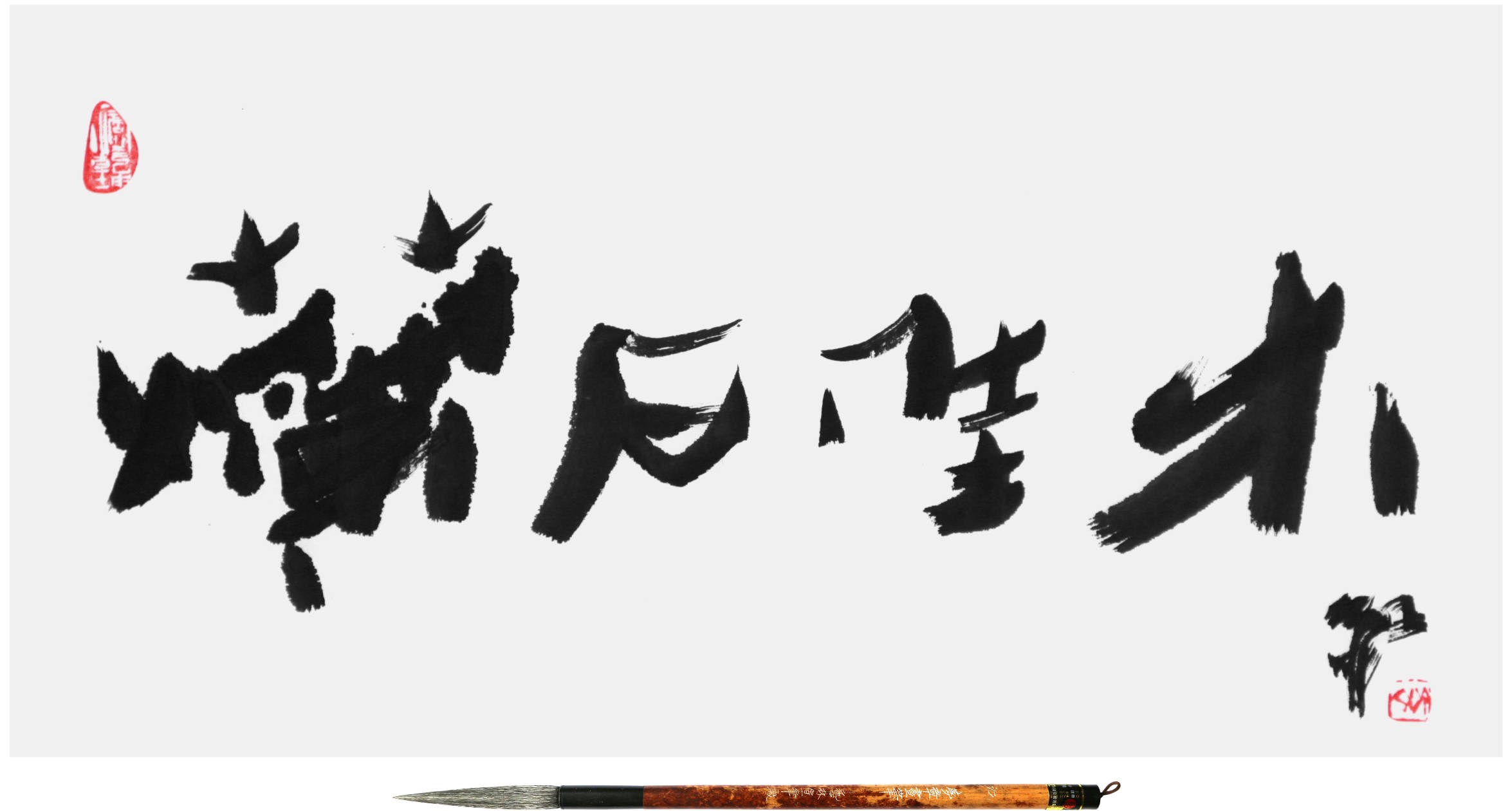 |
|
|
The Example of Sai Koh (Qi Hong)’s Freehand Brushwork
Traditional Chinese Painting and Calligraphy on Tea:
Chinese calligraphy (semi-seal script calligraphy), Chinese seal
engraving (Chinese seal carving, Chinese seal cutting)
Rotten Stone Produce Good Tea Trees
ink on Xuan paper, 2017
Pinyin: lan shi jia mu; Chinese, 爛石佳木 紅
(Literary quotation: Tea Classic made by Lu Yu in the
Tang Dynasty)
Seal: Sai (Qi); Chinese, 齊 A Drop of Water
Moistens the Universe; Chinese, 一滴潤乾坤
Xuan Paper: Mian Liao Mian Lian, 69×34cm
Brush: Goat Hair Long Head Brush, Meng Zhang
Hua Bi · Jiang
|
|
|
|
|
Unique Modelling Technique - the "Taste of Individual
Vitality of the Image" between Likeness and Unlikeness
Master Qi Baishi once said that "The wonderfulness lies between
the likeness and unlikeness. Excessive likeness goes vulgar
while unlikeness is to gain a reputation by deception". It fully
explained the true meaning of the image-building in traditional
Chinese painting and calligraphy. I would like to quote this
statement to encourage myself.
|
|
|
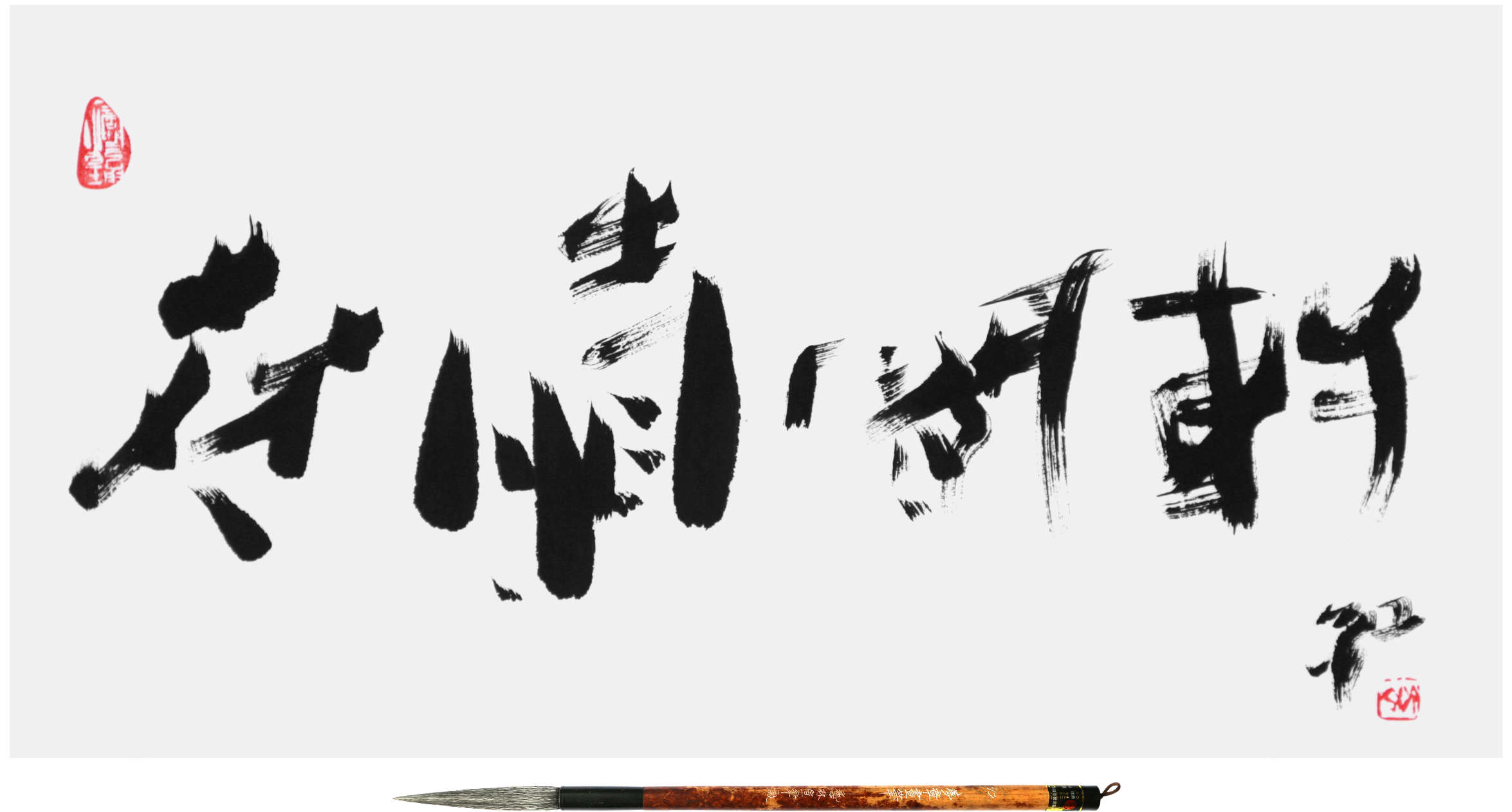 |
|
|
The Example of Sai Koh (Qi Hong)’s Freehand Brushwork
Traditional Chinese Painting and Calligraphy on Tea:
Chinese calligraphy (semi-seal script calligraphy), Chinese seal
engraving (Chinese seal carving, Chinese seal cutting)
The Fragrance of Tea Refreshes a Small Room Elegant
ink on Xuan paper, 2017
Pinyin: fang qing xian xuan; Chinese, 芳清閒軒 紅
(Literary quotation: Poetic Sentences about Drinking Tea on
Moonlight Night made by Yan Zhenqing in the Tang Dynasty)
Seal: Sai (Qi); Chinese, 齊 A Drop of Water
Moistens the Universe; Chinese, 一滴潤乾坤
Xuan Paper: Mian Liao Mian Lian, 69×34cm
Brush: Goat Hair Long Head Brush, Meng Zhang
Hua Bi · Jiang
|
|
|
|
|
Unique Technique to Write Chinese Characters - "Taste of the
Personal Physical and Mental State" Contained in the Lines Drawn
with One Stroke to the End
Unlike other graphic arts which are done by "making",
traditional Chinese painting and calligraphy are produced by
"writing". The writing lines that form Chinese characters such
as seal scripts, clerical scripts and cursive scripts are based
on modelling techniques that feature the richest variation, bear
the most typical Chinese characteristics and best embody the
artist's personal physical and mental state when writing. They
are also key points for a viewer to compare the "tastes of
physical and mental state of the authors".
How to record and reproduce "writing" is inseparable from the
combination of water, writing brush and rice paper.
Water can clearly record and reproduce the state of "writing"
including stillness and interval time (for details, see The
Innate Excellent Carrier of Traditional Chinese Painting and
Calligraphy Art - Water). The difference between rabbit hair,
wolf hair and goat hair is the hardness. In terms of moisture
content and expressiveness, long head goat hair brush is second
to none. Rice paper can be divided into untreated rice paper,
treated rice paper, bark paper and cotton paper according to its
texture. In terms of clarity, Mianlian (cotton-continuous) paper
has the best effect.
In the long history of traditional Chinese calligraphy,
different authors have different pursuits and styles. When
comparing the unrepeatable "writing" states, viewers can focus
on the light ink calligraphy work, which is also written with
long head goat hair brush on cotton-continuous paper, as a
high-resolution state. (See My Writing Examples)
"Writing" can refer to "writing Chinese characters", that is, to
depict for the purpose of "practical modelling", or it can refer
to "youbi", a basic technique of traditional Chinese painting
and calligraphy, which aims to "practical modelling with
aesthetic pursuit". Except for the new character-making masters
who are self-taught and have talents of Cang Jie (the inventor
of Chinese characters in legend), "youbi" is generally formed in
the repeated process of copying, comparing and trying to express
individuality.
The process of forming "youbi" can be like applying and washing
facial masks to individuality. Is "youbi" a random stew of
indeterminate preferences or a monk's robe of patches? Is it an
embarrassment that cannot get away from the template or a copy
of the inheritance of a notable sect? Is it a Thousand-Hand
Guanyin with various themes such as Chinese calligraphy fonts,
landscape paintings, bird-and-flower paintings and ruler
paintings or an independent style that has unified mature
personality regardless of the theme? It can be said that the
styles of "youbi" can only be compared by viewers in the huge
database at all times and in all countries. It is the focus of
the "personality taste" composed of inheritance and innovation.
"Youbi" is a means of image modelling.
Affected by the immature modeling ability that highlights the
part and ignores the whole, or interfered by the dominant idea
that highlights local independent skills rather than the overall
image continuity, if the entire graphic image created by authors
is not vivid, even if each part of each word or object is
permeated with "youbi" skills, such "youbi" works can only be a
failure that features "youbi without vividness".
If the entire image of Chinese characters is composed of wrongly
written or mispronounced characters that don’t belong to the
structure of seal script, official script and cursive script and
are not recognized by academic materials, or if the entire image
of the object is one that can only be discerned by non-human
eyes, even if the author has employed “youbi” skills, his or her
work is merely to "hoodwink the public" as described by Master
Qi Baishi.
Traditional Chinese painting and calligraphy aim to build
freehand images which integrate poetry, calligraphy and
painting. The "youbi" of writing lines refers to the use of
consistent brushstrokes to run through the image of Chinese
characters in the poem and the object image in the painting,
thereby creating an integrated vein of calligraphy and painting.
The "extreme state of youbi" can be a unified state of "one
stroke to the end" that has been maintained all the time from
the first stroke to the final stroke without overlapping
strokes. It can be said that the Chinese character image of the
poem and the object image of the painting are not created by
"writing in a depicting way" but are naturally "supported" by
the consistent physical and mental state that features "one
stroke to the end". Therefore, traditional Chinese painting and
calligraphy can also be an image of "irreproducible extreme
physical and mental state" that "conducts freehand brushwork
with the form, maintains consistency in brush strokes, and
creates vividness in form and spirit". "The taste of the
author’s individual physical and mental state" is the
characteristic focus for the viewers to compare "the authors'
extreme states".
"Stroke consistency" is not only the unification of the physical
and mental state of "one stroke to the end" but also the
objective embodiment of writing techniques of the "one stroke to
the end" as well as a clear visual sense in the central vision
of the whole and part. The technique of "one stroke to the end"
in Chinese calligraphy can be described as the common sense of
the writing technique (see My Writing Examples); in addition to
the combination of "fine brushwork" and "freehand brushwork" in
traditional Chinese painting, the "one stroke to the end"
characterized by writing large characters with a small brush or
writing small characters with a large brush is also a writing
technique (see My Writing Examples); the amount of information
represented by "one stroke to the end" can be the focus on
comparison of "stroke consistency" and the unity of time
sequence of the author's physical and mental state. "Stroke
consistency" refers to the inseparability and coherence of
various parts that make up the entire image. The unity of time
sequence of the author's physical and mental state refers to the
overall image consistency and the vision clarity of the
"integrated poetry, calligraphy and painting".
The state of writing one stroke in need of dipping the ink once,
the state of dissatisfaction due to overlapping brushstrokes,
the state of interruption featuring writing one brushstroke
every other day or few days, the state of sketching an oil
painting on an erecting drawing board with a brush, the state of
playing with a small brush as a drumstick or the state of
dancing with a large brush as a mop, and even the state of
"doing" by using techniques other than "writing" should not be
classified as the extreme physical and mental state of
“writing”.
|
|
|
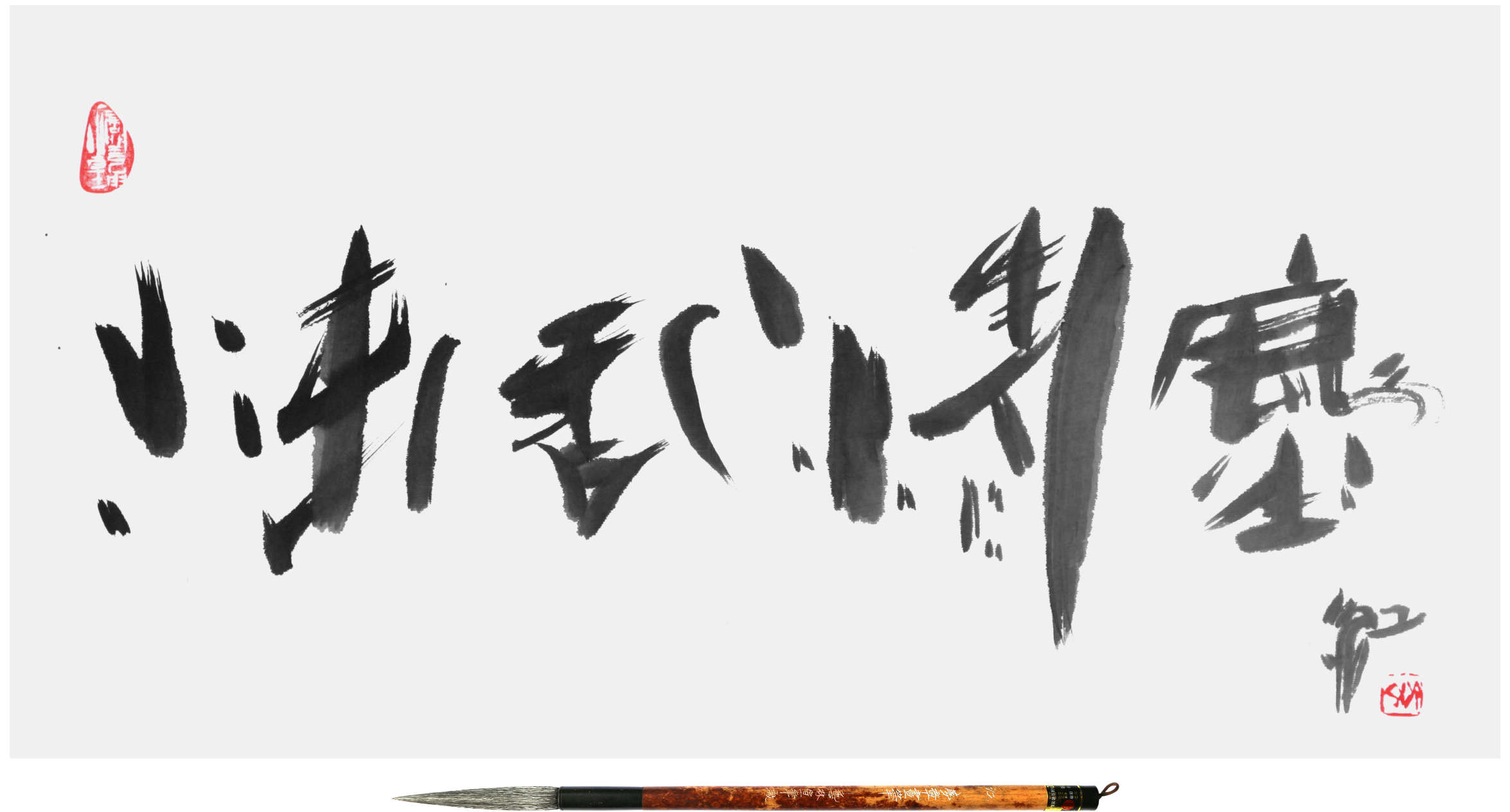 |
|
|
The Example of Sai Koh (Qi Hong)’s Freehand Brushwork
Traditional Chinese Painting and Calligraphy on Tea:
Chinese calligraphy (semi-seal script calligraphy), Chinese seal
engraving (Chinese seal carving, Chinese seal cutting)
The Fragrance of Tea can Wash Away the Spirit Dust
ink on Xuan paper, 2018
Pinyin: mo xiang qing chen; Chinese, 沫香清塵 紅
(Literary quotation: Tea Drinking Song for Master Cui
made by Jiao Ran in the Tang Dynasty)
Seal: Sai (Qi); Chinese, 齊 A Drop of Water
Moistens the Universe; Chinese, 一滴潤乾坤
Xuan Paper: Mian Liao Mian Lian, 69×34cm
Brush: Goat Hair Long Head Brush, Meng Zhang
Hua Bi · Jiang
|
|
|
|
|
Throwing Away a Brick in order to Get a Gem:
In today’s era where photos and video information exist
everywhere, automation is gradually replacing manual labor, and
screens are gradually replacing paper, an author must choose
between the “Chinese taste in traditional Chinese painting and
calligraphy” and the “cultural information conveyed in the
Chinese taste”.
I hereby choose “people-oriented conception”, “the blank space
produced in integration or transformation of Yin and Yang”, “the
modelling that infuses vitality of personality” and “the lines
of one stroke to the end that reflect the author’s extreme
physical and mental state” as the focuses to compare “Chinese
Tastes” of traditional Chinese painting and calligraphy to share
them with my friends as an appealing conversation over a cup of
tea.
I
sincerely hope that the traditional Chinese painting and
calligraphy art will blossom and be permanently brilliant!
The above is my superficial view. Please favour me with your
valuable opinions!
Written by Sai Koh (Qi Hong) in March 2017
My Writing
Examples for your reference:
My humble opinions on “one stroke to the end” are as follows:
Writing at one stretch: the unity of the state of mind and body.
One writing style: It is strictly forbidden to use the brush
repeatedly on the same painting; the writing style will not
change greatly due to different objects; the writing style has a
consistent and stable personality.
Using one brush: It is neither to shift to a small brush when
drawing a thin line nor to shift to a large brush when drawing a
thick line. It is not the alternate use of large and small
brushes but is the completion of all the strokes, regardless of
thickness or thinness, with only one brush of the same size.
Dipping in ink once: It refers to dipping in the ink once and
exhausting it.
Vigour of strokes penetrates the back of the paper: the vigour
of strokes can be fully released on the rice paper laid flat on
the table in view of the fact that water flows downwards.
|
|
View 1
View 3 |
|
|







